
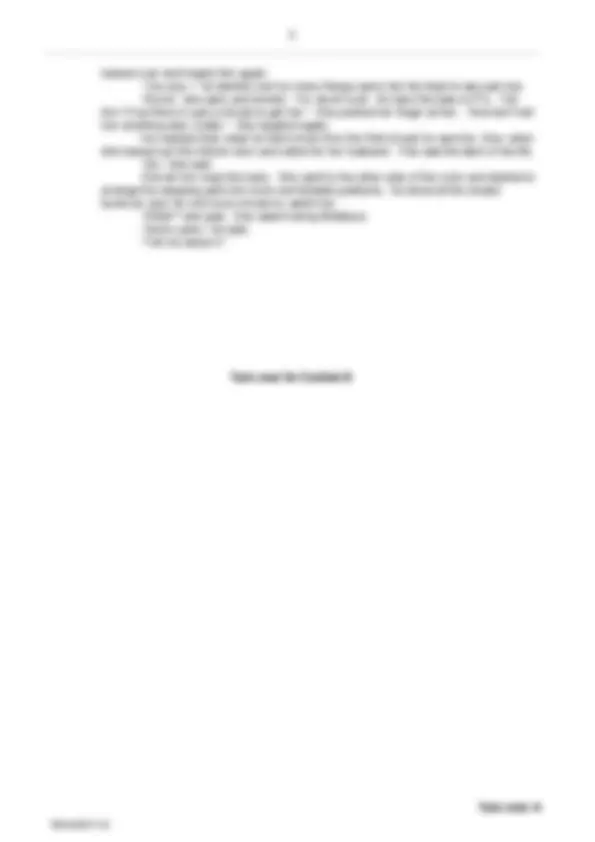
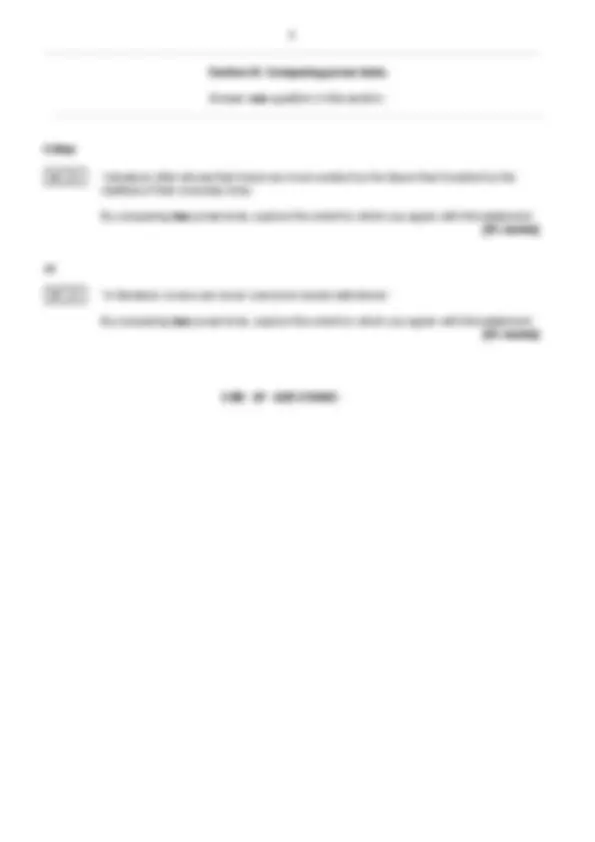
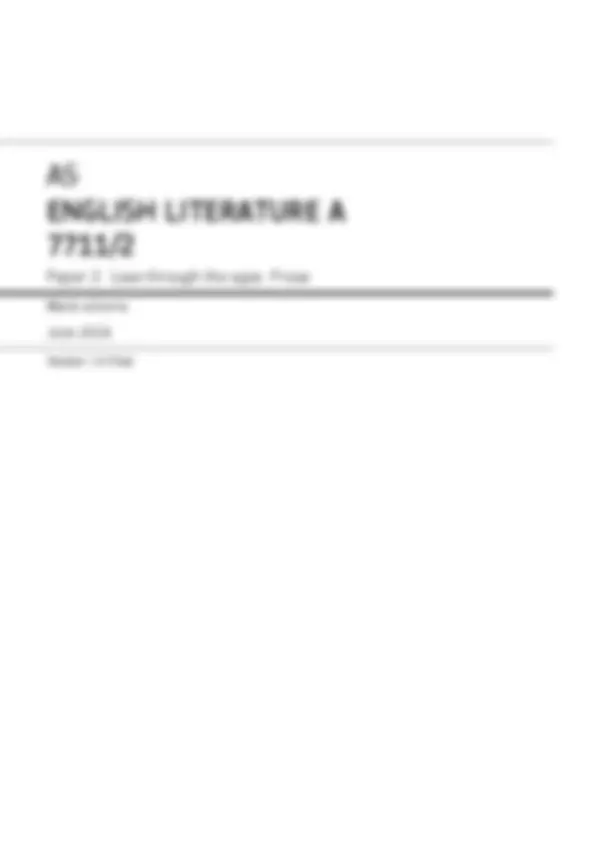
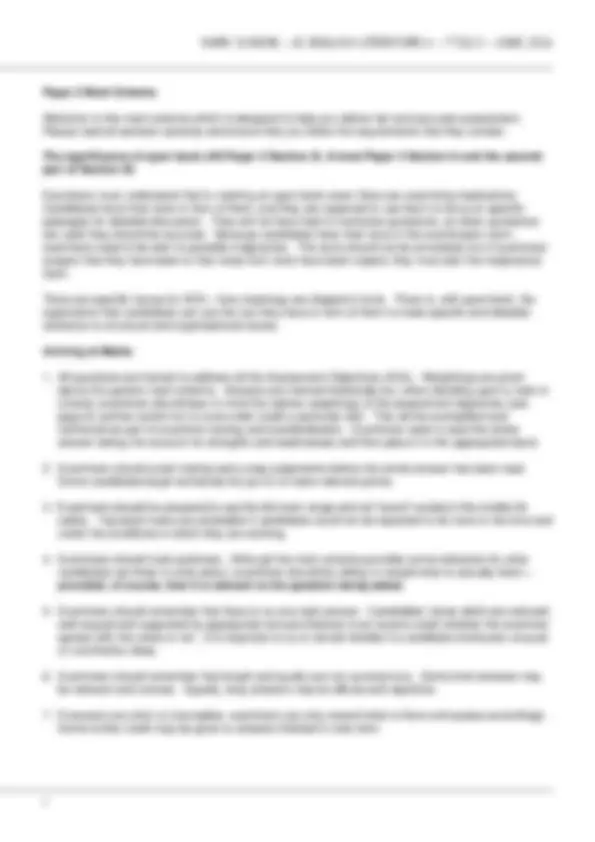
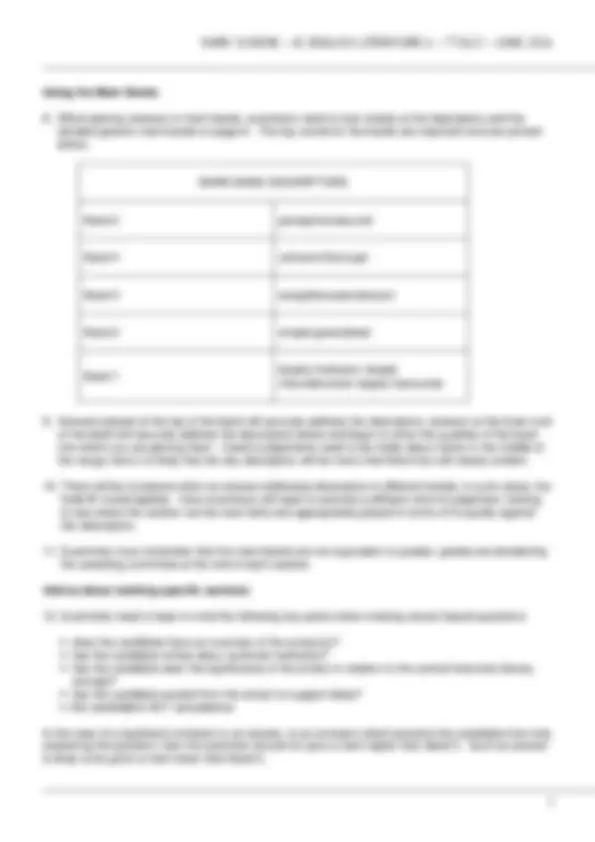
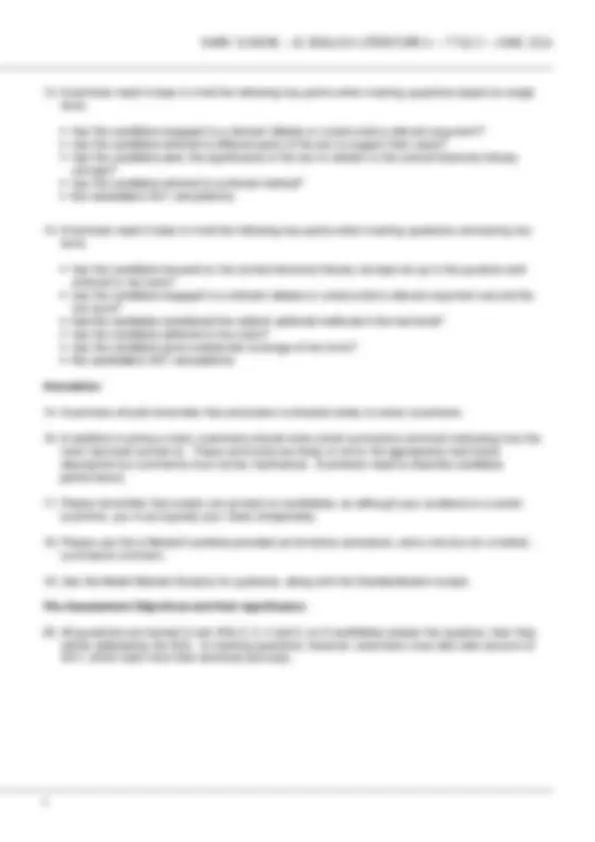
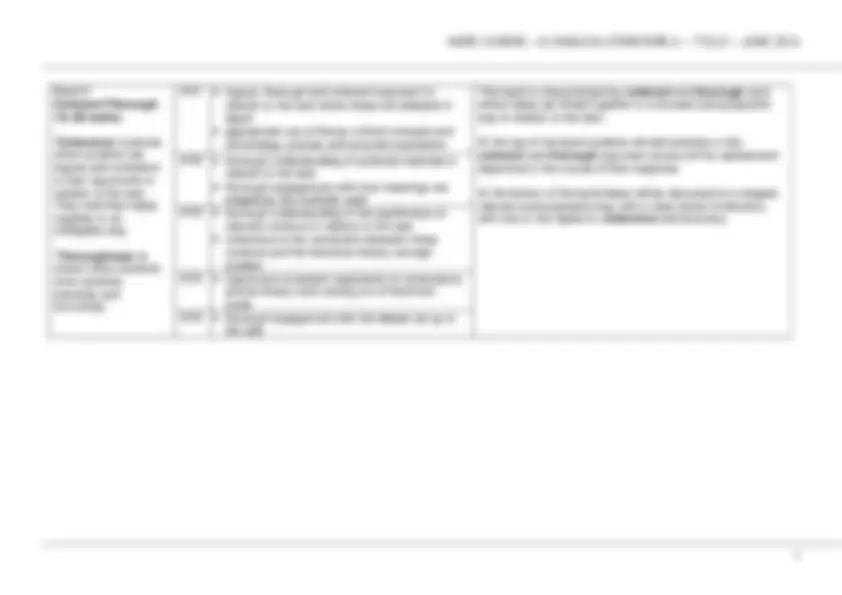
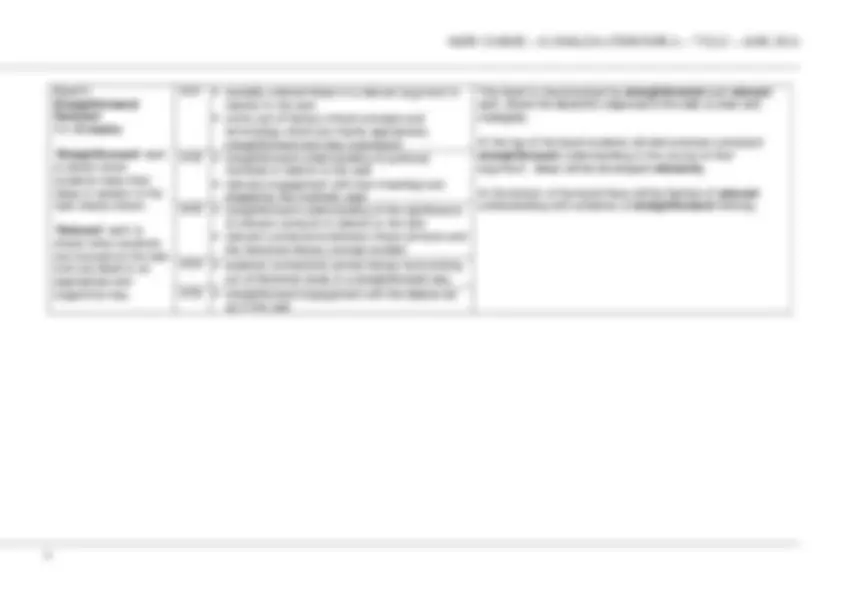
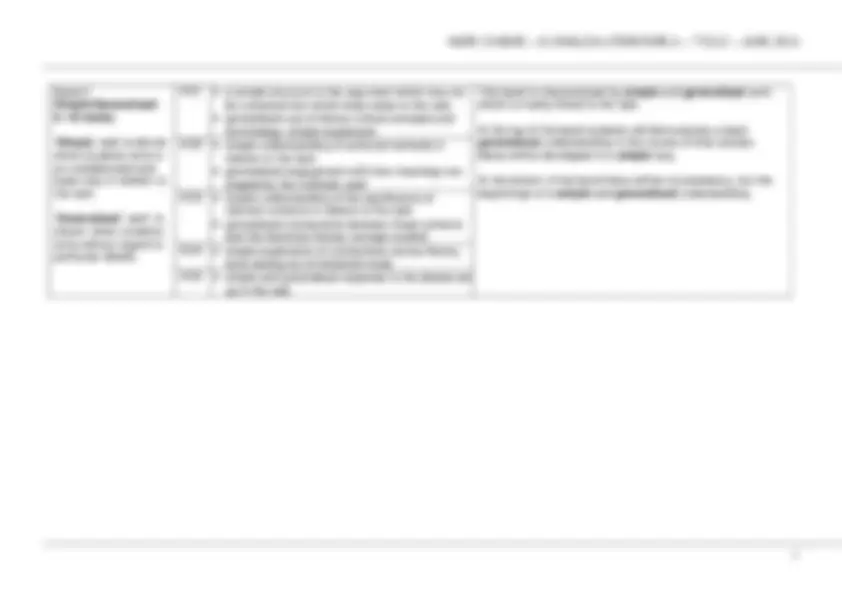
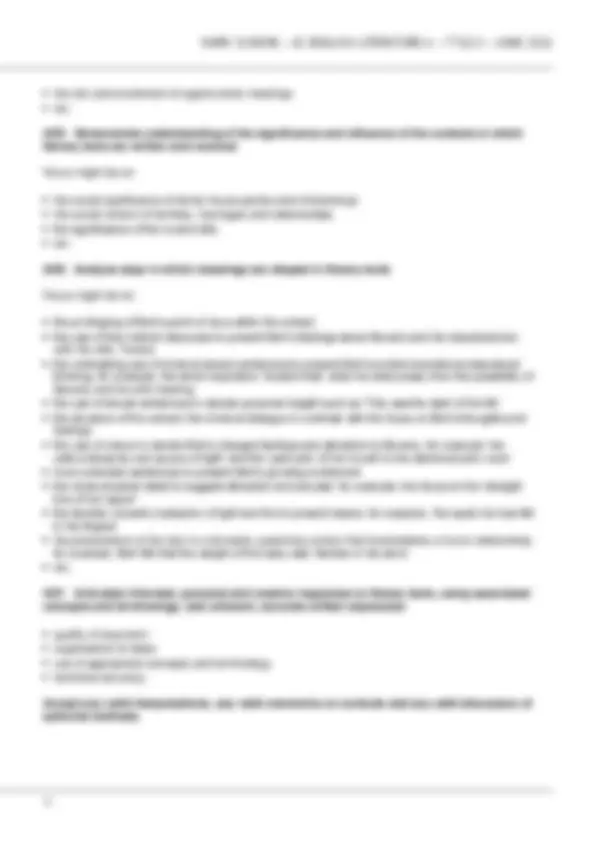
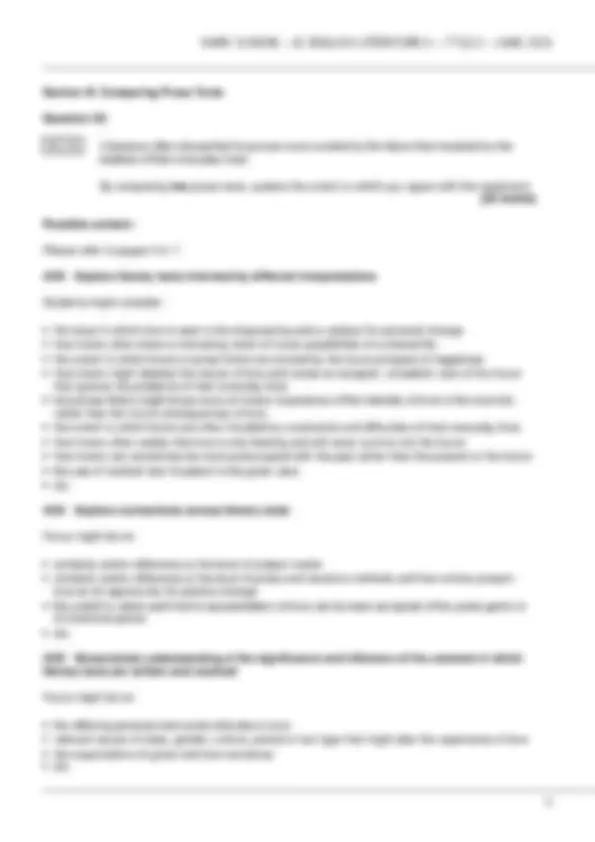
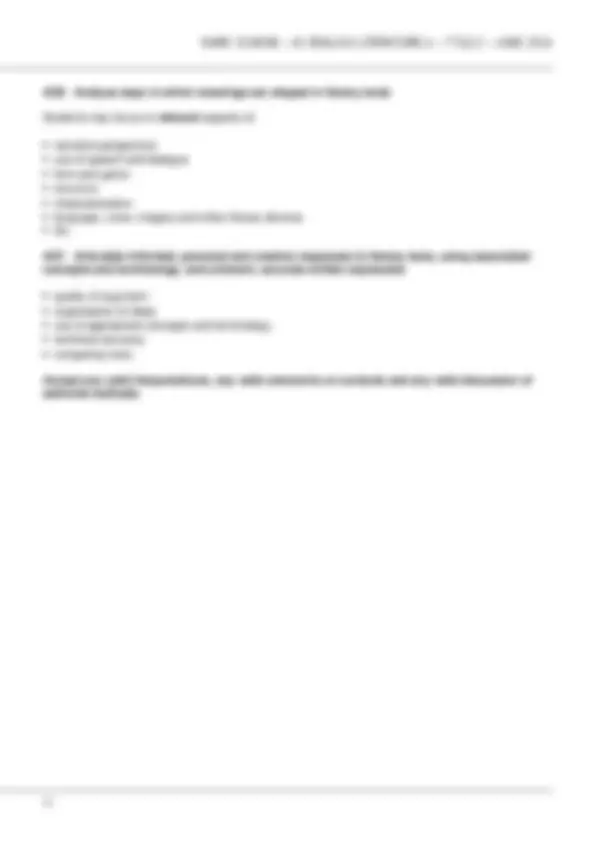
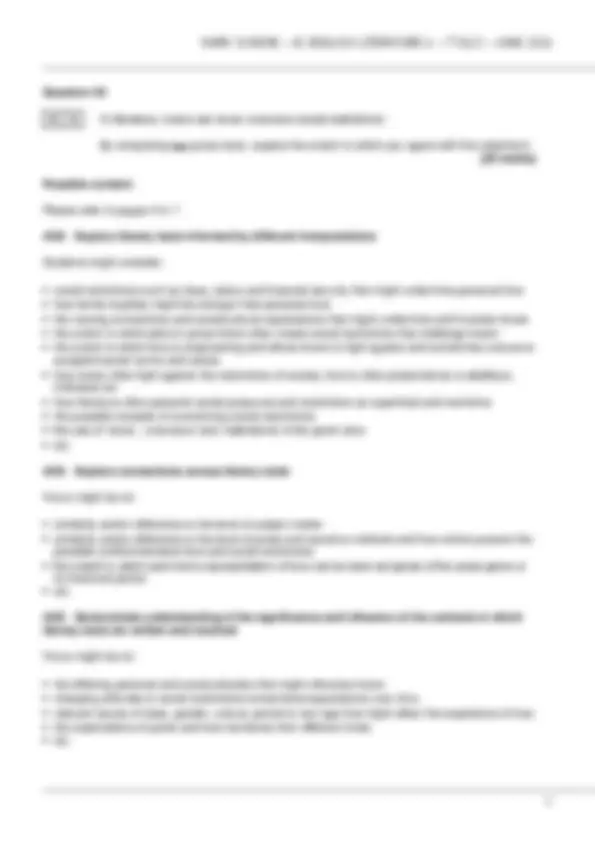
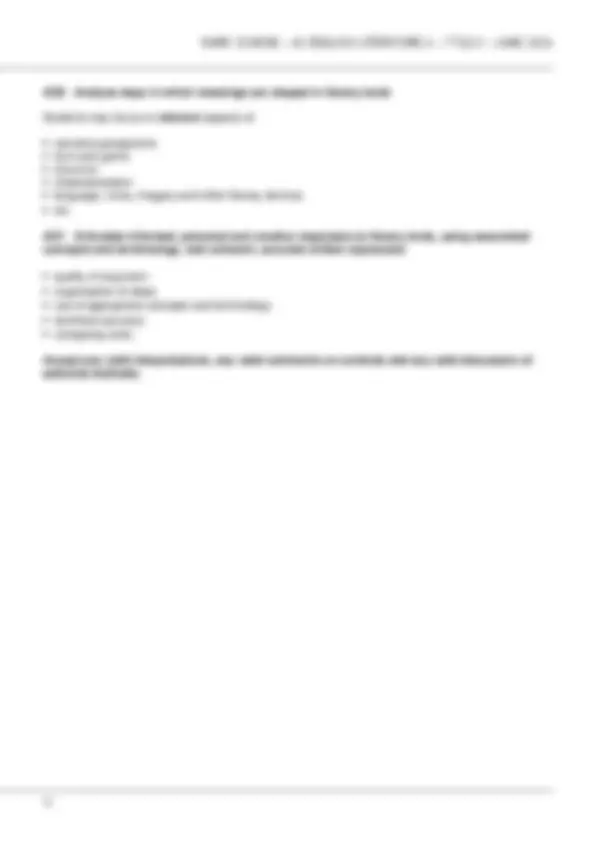


Study with the several resources on Docsity

Earn points by helping other students or get them with a premium plan


Prepare for your exams
Study with the several resources on Docsity

Earn points to download
Earn points by helping other students or get them with a premium plan
Community
Ask the community for help and clear up your study doubts
Discover the best universities in your country according to Docsity users
Free resources
Download our free guides on studying techniques, anxiety management strategies, and thesis advice from Docsity tutors
The mark scheme for the as english literature a exam, specifically the 7711/2 paper from june 2024. It provides detailed guidance on how student responses will be assessed across the various assessment objectives (ao1-ao5) and the different bands of performance. The mark scheme covers key aspects such as articulating informed and creative responses, analyzing authorial methods, understanding contextual significance, and exploring connections across literary texts. It offers valuable insights into the expectations and criteria used to evaluate student work in this a-level english literature examination.
Typology: Exams
1 / 22

This page cannot be seen from the preview
Don't miss anything!















Section A: Unseen prose
Answer the question in this section.
0 1 Commonwealth by Ann Patchett was published in 2016. In this extract, set in America in 1964, Bert Cousins, married to Teresa, meets Beverly Keating at the christening party for her baby daughter. Beverly’s husband, Fix, has asked Bert to bring the baby back down to the party.
Examine the view that Patchett presents Bert’s feelings towards Beverly as being more than casual.
Make close reference to the writer’s methods in your response. [25 marks]
He started again. “Your husband asked me to find the baby.” Finished with her work, Beverly rearranged the baby’s dress and lifted her up from the table. “Well, here she is,” she said. She touched her nose to the baby’s nose and the baby smiled and yawned. “Somebody’s been awake a long time.” Beverly turned towards the crib. “Let me take her out to Fix for a minute,” he said. “Before you put her down.” Beverly Keating tilted her head slightly to one side and gave him a funny look. “Why does Fix need her?” It was everything, the pale pink of her mouth in the darkened pink room, the door that was closed now though he didn’t remember closing it, the smell of her perfume which had somehow managed to float gently above the familiar stench of the diaper pail. Had Fix asked him to bring the baby back or just to find her? It didn’t make any difference. He told her he didn’t know, and then he stepped towards her, her yellow dress its own source of light. He held out his arms and she stepped into them, holding out the baby. “Take her then,” she said. “Do you have children?” But by then she was very close and she lifted up her face. He put one arm under the baby, which meant he was putting his arm beneath her breasts. It wasn’t a year ago she’d had this baby and while he didn’t know what she’d looked like before it was hard to imagine she had ever looked any better than this. Teresa never pulled herself together. She said it wasn’t possible, one coming right after the next. Wouldn’t he like to introduce the two of them, just to show his wife what could be done if you cared to try. Scratch that. He had no interest in Teresa meeting Beverly Keating. He put his other arm around her back, pressed his fingers into the straight line of her zipper. It was the magic of gin and orange juice. The baby balanced between the two of them and he kissed her. That was the way this day was turning out. He closed his eyes and kissed her until the spark he had felt in his fingers when he touched her hand in the kitchen ran the entire shivering length of his spine. She put her other hand against the small of his back while the tip of her tongue crossed between his parted teeth. There was an almost imperceptible shift between them. He felt it, but she stepped back. He was holding the baby. The baby cried for a second, a single red-faced wail, and then issued a small hiccup and pressed into Cousins’s chest. “We’re going to smother her,” she said, and laughed. She looked down at the baby’s pretty face. “Sorry about that.” The small weight of the Keating girl was familiar in his arms. Beverly took a soft cloth from the changing table and wiped over his mouth. “Lipstick,” she said, then she
Section B: Comparing prose texts
Answer one question in this section.
Either
0 2 ‘Literature often shows that lovers are more excited by the future than troubled by the realities of their everyday lives.’
By comparing two prose texts, explore the extent to which you agree with this statement. [ 25 marks]
or
0 3 ‘In literature, lovers can never overcome social restrictions.’
By comparing two prose texts, explore the extent to which you agree with this statement. [ 25 marks]
Version: 1.0 Final
Level of response marking instructions
Level of response mark schemes are broken down into levels, each of which has a descriptor. The descriptor for the level shows the average performance for the level. There are marks in each level.
Before you apply the mark scheme to a student’s answer read through the answer and annotate it (as instructed) to show the qualities that are being looked for. You can then apply the mark scheme.
Start at the lowest level of the mark scheme and use it as a ladder to see whether the answer meets the descriptor for that level. The descriptor for the level indicates the different qualities that might be seen in the student’s answer for that level. If it meets the lowest level then go to the next one and decide if it meets this level, and so on, until you have a match between the level descriptor and the answer. With practice and familiarity you will find that for better answers you will be able to quickly skip through the lower levels of the mark scheme.
When assigning a level you should look at the overall quality of the answer and not look to pick holes in small and specific parts of the answer where the student has not performed quite as well as the rest. If the answer covers different aspects of different levels of the mark scheme you should use a best fit approach for defining the level and then use the variability of the response to help decide the mark within the level, ie if the response is predominantly level 3 with a small amount of level 4 material it would be placed in level 3 but be awarded a mark near the top of the level because of the level 4 content.
Once you have assigned a level you need to decide on the mark. The descriptors on how to allocate marks can help with this. The exemplar materials used during standardisation will help. There will be an answer in the standardising materials which will correspond with each level of the mark scheme. This answer will have been awarded a mark by the Lead Examiner. You can compare the student’s answer with the example to determine if it is the same standard, better or worse than the example. You can then use this to allocate a mark for the answer based on the Lead Examiner’s mark on the example.
You may well need to read back through the answer as you apply the mark scheme to clarify points and assure yourself that the level and the mark are appropriate.
Indicative content in the mark scheme is provided as a guide for examiners. It is not intended to be exhaustive and you must credit other valid points. Students do not have to cover all of the points mentioned in the Indicative content to reach the highest level of the mark scheme.
An answer which contains nothing of relevance to the question must be awarded no marks.
Paper 2 Mark Scheme
Welcome to this mark scheme which is designed to help you deliver fair and accurate assessment. Please read all sections carefully and ensure that you follow the requirements that they contain.
The significance of open book (AS Paper 2 Section B, A-level Paper 2 Section A and the second part of Section B)
Examiners must understand that in marking an open book exam there are examining implications. Candidates have their texts in front of them, and they are expected to use them to focus on specific passages for detailed discussion. They will not have had to memorise quotations, so when quotations are used they should be accurate. Because candidates have their texts in the examination room, examiners need to be alert to possible malpractice. The texts should not be annotated, but if examiners suspect that they have been or that notes from texts have been copied, they must alert the malpractice team.
There are specific issues for AO2 – how meanings are shaped in texts. There is, with open book, the expectation that candidates can use the text they have in front of them to make specific and detailed reference to structural and organisational issues.
Arriving at Marks
Annotation
The Assessment Objectives and their significance
The AOs are as follows:
AO1 Articulate informed, personal and creative responses to literary texts, using associated concepts and terminology, and coherent, accurate written expression. (28%)
AO2 Analyse ways in which meanings are shaped in literary texts. (24%)
AO3 Demonstrate understanding of the significance and influence of the contexts in which literary texts are written and received. (24%)
AO4 Explore connections across literary texts. (12%)
AO5 Explore literary texts informed by different interpretations. (12%)
Rubric Infringements
If there has been an infringement, the whole answer needs to be read and judged on its quality. A mark should then be given based on the best relevant part of the response. The mark given will not be beyond Band 3.
Band 4 Coherent/Thorough 16 – 20 marks
‘ Coherence ’ is shown when students are logical and consistent in their arguments in relation to the task. They hold their ideas together in an intelligible way.
‘ Thoroughness ’ is shown when students write carefully, precisely and accurately.
AO1 (^) • logical, thorough and coherent argument in relation to the task where ideas are debated in depth
This band is characterised by coherent and thorough work where ideas are linked together in a focused and purposeful way in relation to the task.
At the top of the band students will demonstrate a fully coherent and thorough argument across all five assessment objectives in the course of their response.
At the bottom of the band ideas will be discussed in a shaped, relevant and purposeful way with a clear sense of direction, with one or two lapses in coherence and accuracy.
AO2 (^) • thorough understanding of authorial methods in relation to the task
Band 3 Straightforward/ Relevant 11 – 15 marks
‘ Straightforward ’ work is shown when students make their ideas in relation to the task clearly known.
‘ Relevant ’ work is shown when students are focused on the task and use detail in an appropriate and supportive way.
AO1 (^) • sensibly ordered ideas in a relevant argument in relation to the task
This band is characterised by straightforward and relevant work where the student’s response to the task is clear and intelligible.
At the top of the band students will demonstrate consistent straightforward understanding in the course of their argument. Ideas will be developed relevantly.
At the bottom of the band there will be flashes of relevant understanding with evidence of straightforward thinking.
AO2 (^) • straightforward understanding of authorial methods in relation to the task
Band 1 Largely irrelevant/largely misunderstood/largely inaccurate 1 – 5 marks
‘ Largely irrelevant ’ work is shown when students write in an unclear way with only occasional reference to what is required by the question.
‘ Largely misunderstood ’ and ‘ largely inaccurate ’ work is shown when knowledge of the text is insecure, hazy and often wrong.
This band is characterised by work which is largely irrelevant and largely misunderstood and largely inaccurate , and so unlikely to be addressing the AOs in a relevant way.
At the top of the band students will mention some unconnected points in relation to the task during the course of their writing. The writing is likely to lack clarity.
At the bottom of the band there will be no connection with the task; the writing will be hard to follow and irrelevant.
0 marks (^) No marks for response when nothing is written or where response has no connection to the text(s) or task.
Section A: Unseen prose
Question 01
(^0 1) Commonwealth by Ann Patchett was published in 2016. In this extract, set in America in 1964, Bert Cousins, married to Teresa, meets Beverly Keating at the christening party for her baby daughter. Beverly’s husband, Fix, has asked Bert to bring the baby back down to the party.
Examine the view that Patchett presents Bert’s feelings towards Beverly as being more than casual.
Make close reference to the writer’s methods in your response. [ 25 marks]
Possible content:
Please refer to pages 4 to 7.
AO5 Explore literary texts informed by different interpretations
Students might consider:
AO4 Explore connections across literary texts
Focus might be on:
Section B: Comparing Prose Texts
Question 02
(^0 2) ‘Literature often shows that lovers are more excited by the future than troubled by the realities of their everyday lives.’
By comparing two prose texts, explore the extent to which you agree with this statement. [ 25 marks]
Possible content:
Please refer to pages 4 to 7.
AO5 Explore literary texts informed by different interpretations
Students might consider:
AO4 Explore connections across literary texts
Focus might be on:
AO3 Demonstrate understanding of the significance and influence of the contexts in which literary texts are written and received
Focus might be on:
AO2 Analyse ways in which meanings are shaped in literary texts
Students may focus on relevant aspects of:
AO1 Articulate informed, personal and creative responses to literary texts, using associated concepts and terminology, and coherent, accurate written expression
Accept any valid interpretations, any valid comments on contexts and any valid discussion of authorial methods.